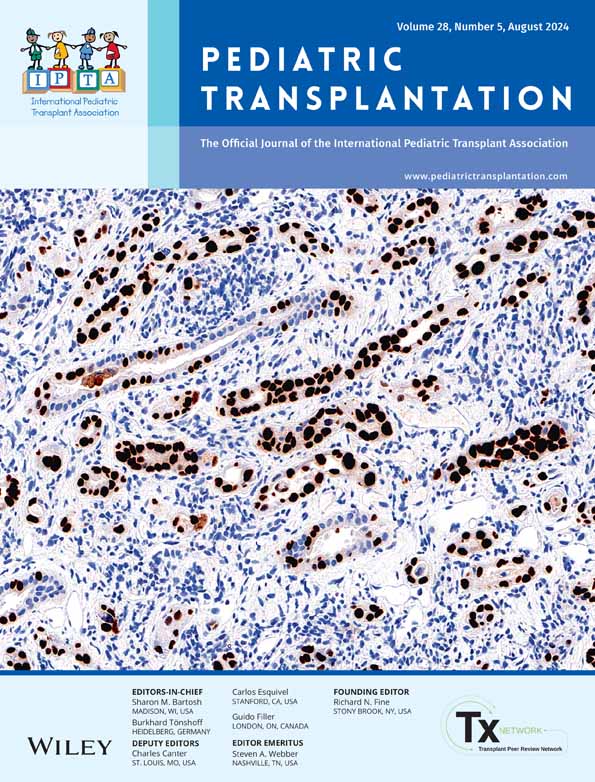Constructing an Intent-to-Treat Score Index to Predict Survival Outcomes in Pediatric Liver Transplant Recipients
Funding: This work was supported in part by the Health Resources and Services Administration contract HHSH250-2019-00001C.
ABSTRACT
Background
Waitlist and posttransplant outcomes have been widely reported for pediatric liver transplantation. Yet, analyzing these metrics individually fails to provide a holistic perspective for patients and their families. Intent-to-treat (ITT) analysis fills this gap by studying the associations between waitlist outcomes, organ availability, and posttransplant outcomes. Our study aimed to construct a predictive index utilizing ITT analysis for pediatric liver transplant recipients (Pedi-ITT).
Methods
We performed a retrospective analysis utilizing de-identified data provided by the United Network for Organ Sharing (UNOS) from March 1, 2002, to December 31, 2021. We analyzed data for 12 926 pediatric recipients (age <18). We conducted a univariate and multivariable logistic regression to find the significant predictive factors affecting ITT survival. A scoring index was constructed to stratify outcome risk on the basis of the significant factors identified by regression analysis.
Results
Multivariable analysis found the following factors to be significantly associated with death on the waitlist or after transplant: gender, diagnosis, UNOS region, ascites, diabetes mellitus, age at the time of listing, serum sodium at the time of listing, total bilirubin at the time of listing, serum creatinine at the time of listing, INR at the time of listing, history of ventilator use, and history of re-transplantation. Using receiver operator characteristic analysis, the Pedi-ITT index had a c-statistic of 0.79 (95% confidence interval [CI]: 0.76–0.82). The c-statistics of the Model for End-Stage Liver Disease/Pediatric for End-Stage Liver Disease and pediatric version of the Survival Outcomes Following Liver Transplantation score indices were 0.74 (CI: 0.71–0.76) and 0.69 (CI: 0.66–0.72), respectively.
Conclusions
The Pedi-ITT index provides an additional prognostic model with moderate predictive power to assess outcomes associated with pediatric liver transplantation. Further analysis should focus on increasing the predictive power of the index.
Conflicts of Interest
The authors declare no conflicts of interest.
Open Research
Data Availability Statement
The data used in this manuscript was from a public database supplied by the Organ Procurement Transplantation Network (OPTN) provided through the United Network for Organ Sharing (UNOS).




